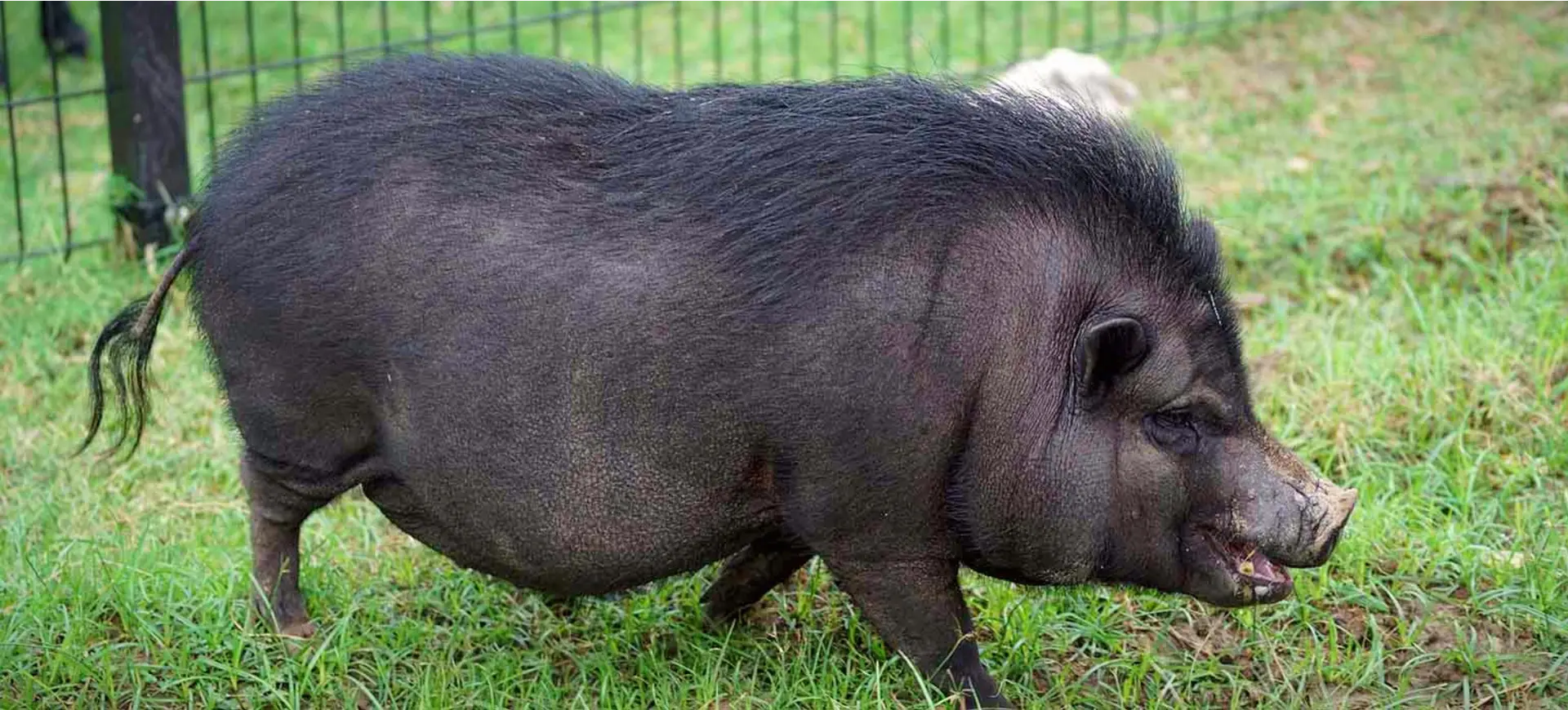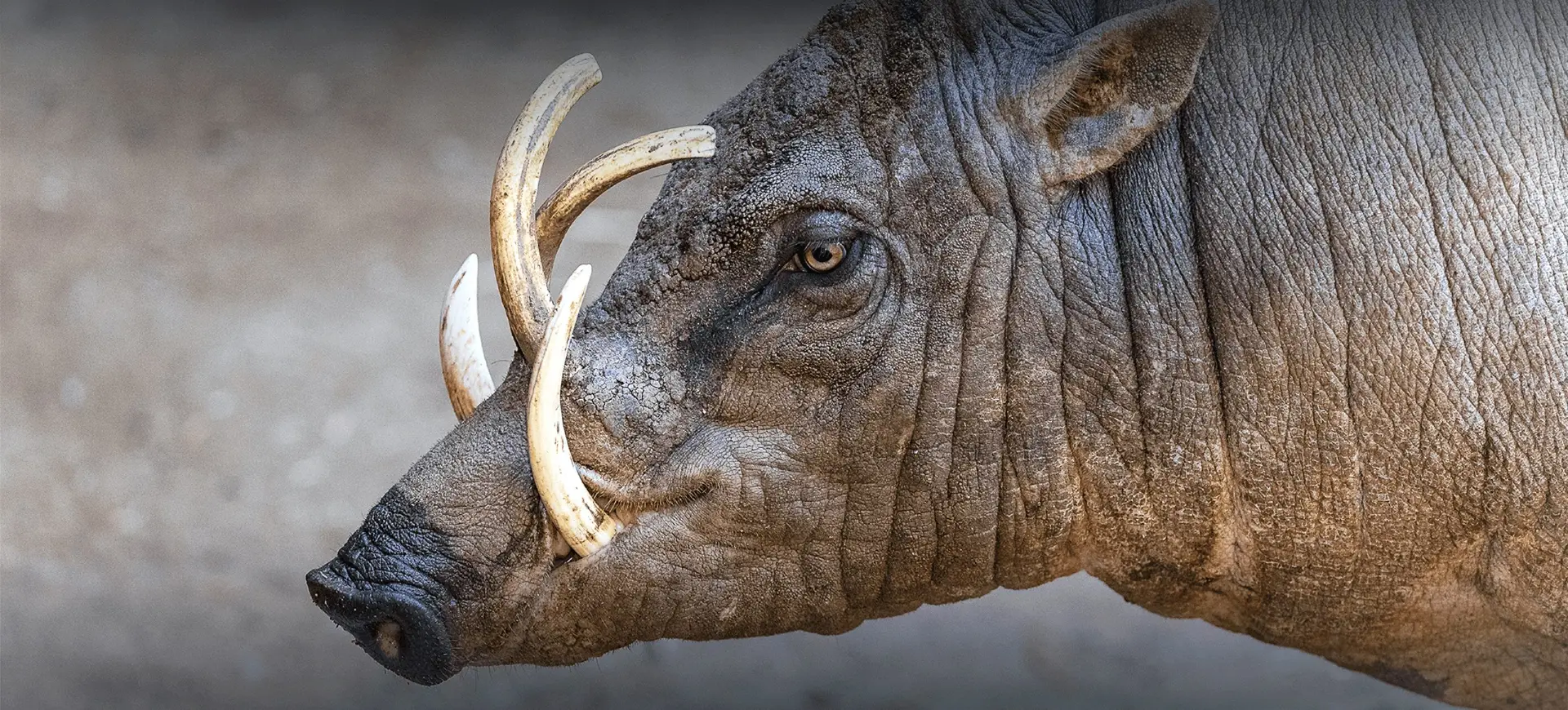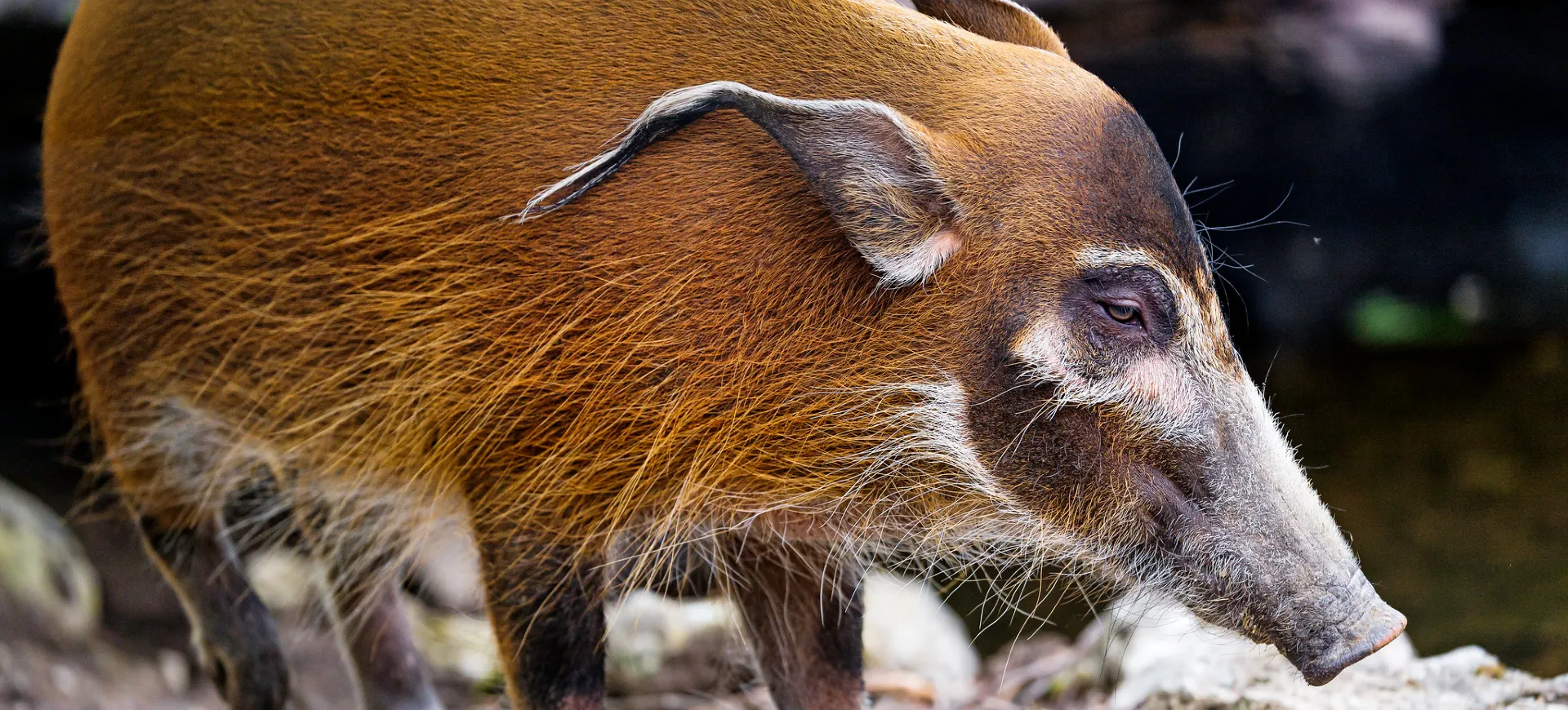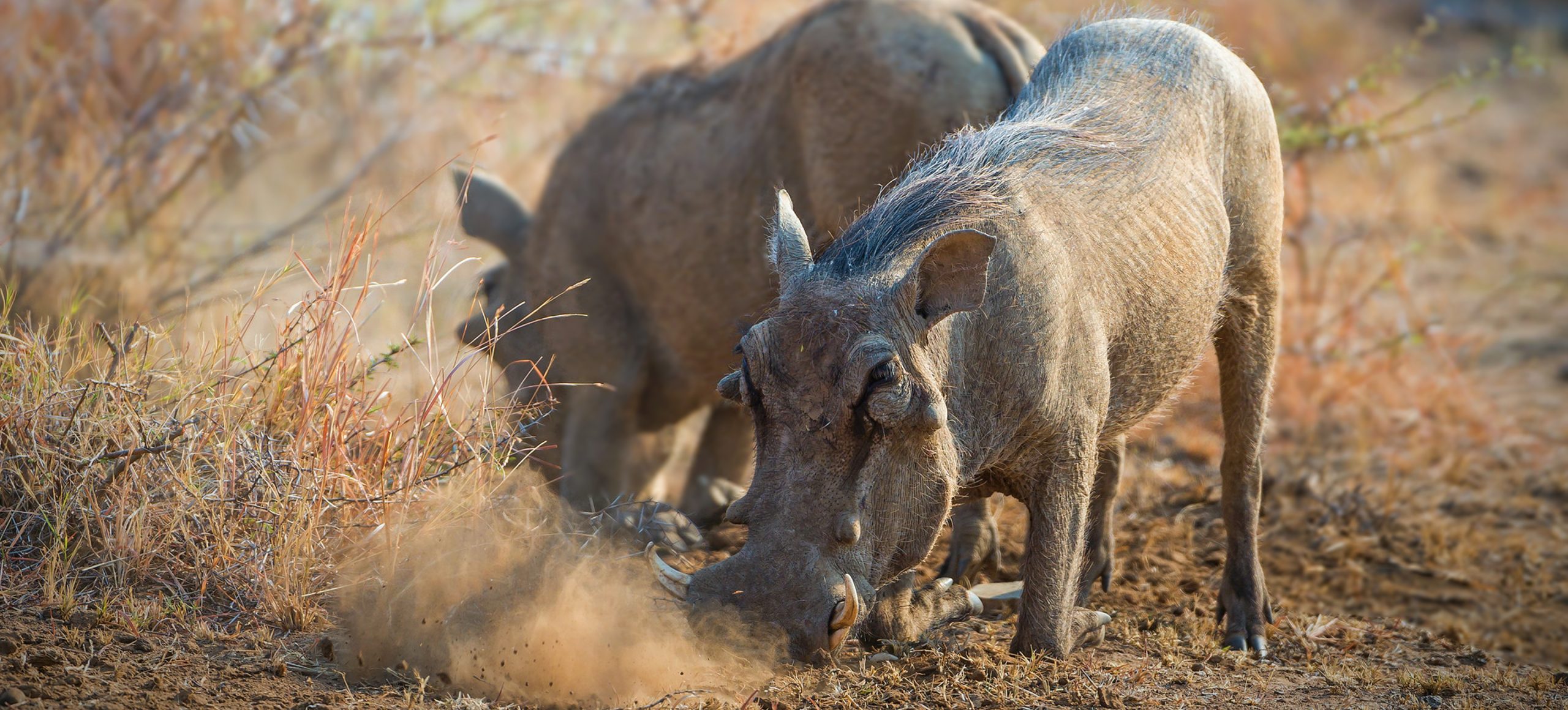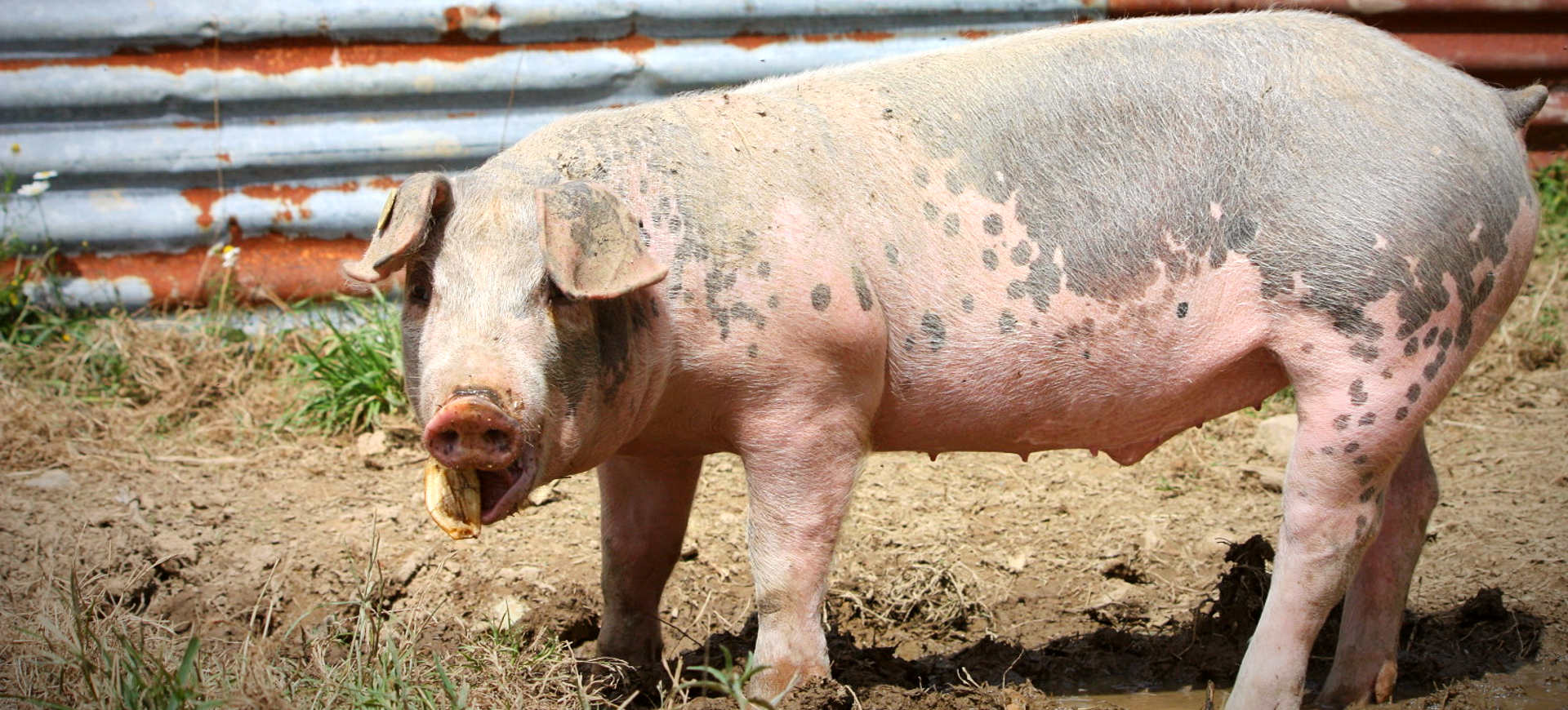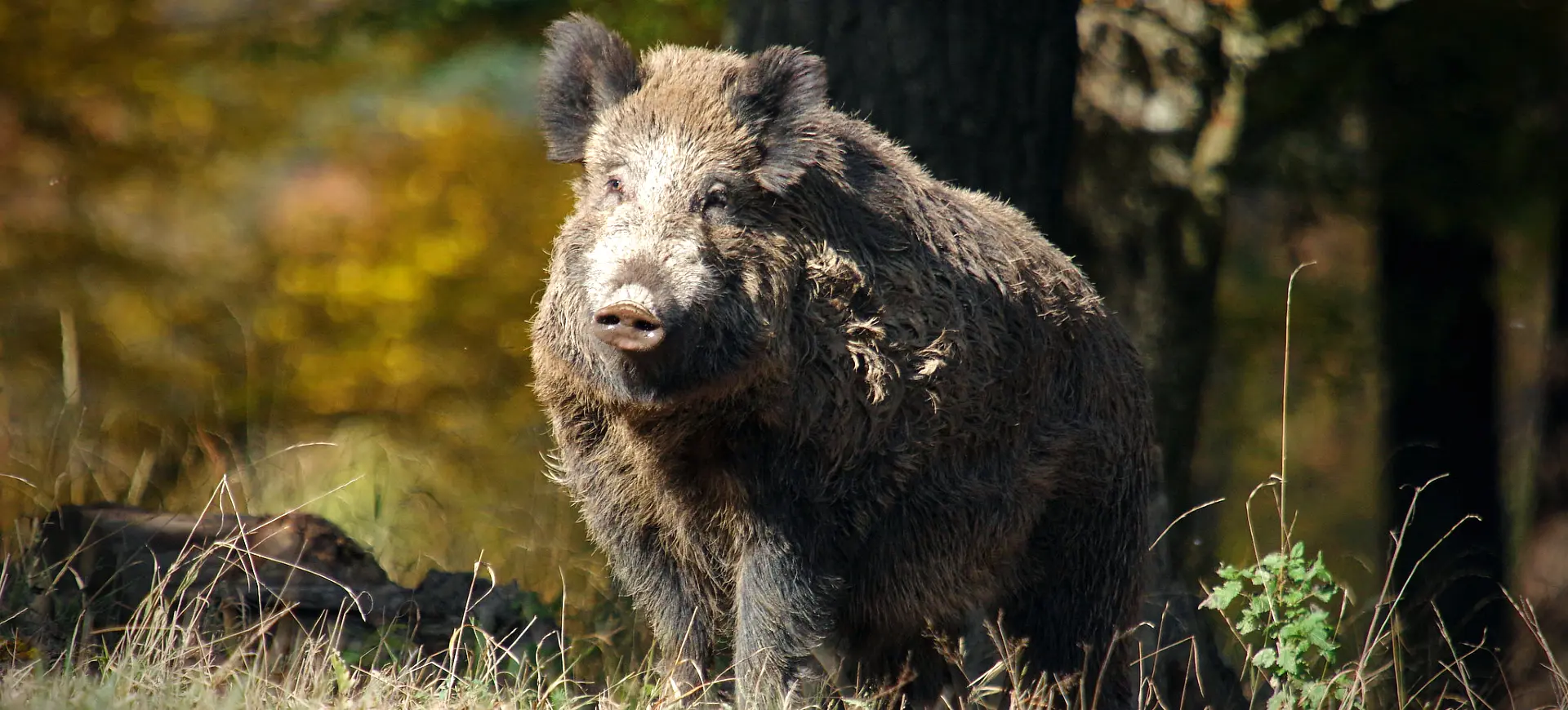Overview
The Visayan Warty Pig is a critically endangered species of pig native to the Visayan Islands in the Philippines. Characterized by small body size and distinctive facial warts, this species is one of the most threatened mammals in the world. The warts, found predominantly in males, serve as a form of protection when they fight.
The Visayan Warty Pig is primarily a forest-dwelling animal inhabiting primary and secondary forests. It is a highly social species that live in small groups, often consisting of one adult male, several females, and their offspring. These groups are known as sounders and are led by the dominant male.
The diet of the Visayan Warty Pig is omnivorous, consisting of roots, tubers, and a variety of plant material, as well as small invertebrates. Due to habitat loss and hunting, the species has experienced a drastic decline in numbers, making conservation efforts crucial for its survival.
Taxonomy
Kingdom
Phylum
Class
Order
Family
Genus
Species
Sub Species
Type
Physical Description:
The Visayan Warty Pig is a small to medium-sized pig with a coarse, bristly coat that ranges from black to brown. Males are generally larger than females and have three pairs of facial warts, which are less prominent in females. The species has a relatively short snout and small ears compared to other pig species.
Adult males typically have a mane of long, spiky hairs that run along the back, which is particularly prominent during the breeding season. The mane is often erected when the animal is agitated or excited. Females are generally smaller and lack the prominent mane seen in males.

Lifespan: Wild: ~8 years || Captivity: ~20 years

Weight: Male: 77–110 lbs (35–50 kg) || Female: 55–77 lbs (25–35 kg)

Length: Male: 35–45 in (89–114 cm) || Female: 30–40 in (76–102 cm)

Height: Male: 25–30 in (63.5–76.2 cm) || Female: 20–25 in (50.8–63.5 cm)

Top Speed: 15 mph (24 km/h)
Characteristic:
Native Habitat:
The Visayan Warty Pig is native to the Visayan Islands in the central Philippines. It primarily inhabits lowland forests, both primary and secondary. The species is highly adaptable and can be found in disturbed habitats, including agricultural areas and plantations.
Due to extensive habitat loss and fragmentation, the range of the Visayan Warty Pig has been significantly reduced. The remaining populations are often isolated, and face increased pressure from hunting and habitat degradation. Conservation efforts are focused on habitat restoration and protection to ensure the survival of this critically endangered species.
Climate Zones:
Biomes:
WWF Biomes:
Biogeographical Realms:
Continents:
Countries:
Diet:
Diet & Feeding Habits:
The Visayan Warty Pig is an omnivore, feeding on various plant materials such as roots, tubers, leaves, and small invertebrates. They are known to forage in the early morning and late afternoon, avoiding the day’s heat. The species uses its strong snout to dig up roots and tubers from the ground.
Due to the loss of their natural habitat, these pigs have been known to venture into agricultural areas to feed, often leading to conflicts with local farmers. They are opportunistic feeders who consume whatever is readily available, including crops and household waste, when natural food sources are scarce.
Mating Behavior:
Mating Description:
The Visayan Warty Pig has a polygynous mating system, where a single dominant male mates with multiple females. The breeding season is generally from January to March, and females give birth to a litter of 3 to 4 piglets after a gestation period of about 114 days. Both males and females reach sexual maturity at around 18 months.
During breeding, males engage in aggressive behaviors and fights to establish dominance and secure mating rights. The dominant male in the sounder will mate with all the receptive females. After giving birth, the female is solely responsible for caring for the piglets, which are weaned at around three months.
Reproduction Season:
Birth Type:
Pregnancy Duration:
Female Name:
Male Name:
Baby Name:
Social Structure Description:
The Visayan Warty Pig is a social animal in small groups known as sounders. A dominant male typically leads these groups, consisting of several females and their offspring. The social structure is relatively stable, although it can be disrupted by external factors such as hunting or habitat loss.
Within the sounder is a clear hierarchy, with the dominant male enjoying the highest status. This male is responsible for the defense of the territory and the group. Social interactions include foraging together and mutual grooming, which helps strengthen social bonds within the group.
Groups:
Conservation Status:
Population Trend:
The Visayan Warty Pig is classified as Critically Endangered, with populations continuing to decline due to habitat loss and hunting. The species is now restricted to a few isolated pockets within its native range. Conservation efforts are focused on habitat restoration, the establishment of protected areas, and captive breeding programs.
Despite ongoing conservation initiatives, the species faces significant challenges, including human-wildlife conflict and habitat degradation. The remaining populations are fragmented and isolated, making them more vulnerable to extinction. Urgent action is needed to protect this critically endangered species and its rapidly diminishing habitat.
Population Threats:
The primary threats to the Visayan Warty Pig are habitat loss and hunting. Deforestation for agriculture and human settlement has led to significant habitat fragmentation, isolating populations and making them more vulnerable to extinction. The species is also hunted for its meat, further exacerbating the decline in numbers.
In addition to these direct threats, the Visayan Warty Pig faces challenges from human-wildlife conflict. As their natural habitat shrinks, these pigs are increasingly venturing into agricultural areas, leading to conflicts with local farmers. This often results in retaliatory killings, adding another threat to critically endangered species.
Conservation Efforts:
The Visayan Warty Pig’s conservation efforts focus on habitat restoration and protection. Several protected areas have been established to safeguard the remaining populations. Captive breeding programs are also in place to bolster numbers and potentially reintroduce individuals into the wild.
Despite these efforts, the species continues to face significant challenges. Public awareness campaigns are being conducted to educate local communities about the importance of conserving this critically endangered species. International collaboration is also crucial for pooling resources and expertise to ensure the survival of the Visayan Warty Pig.
Additional Resources:
Fun Facts
- The Visayan Warty Pig is one of the world’s most critically endangered pig species.
- The species is native to the Visayan Islands in the Philippines.
- Males have distinctive facial warts, which are less prominent in females.
- The Visayan Warty Pig is an omnivore, feeding on various plant materials and small invertebrates.
- They live in small social groups called sounders, typically led by a dominant male.
- The species has a polygynous mating system, with one male mating with multiple females.
- The Visayan Warty Pig is highly adaptable and can survive in various habitats, including disturbed areas.
- They are known to venture into agricultural areas, leading to conflicts with local farmers.
- Conservation efforts include habitat restoration, the establishment of protected areas, and captive breeding programs.
- The species is classified as Critically Endangered, with populations continuing to decline due to habitat loss and hunting.





